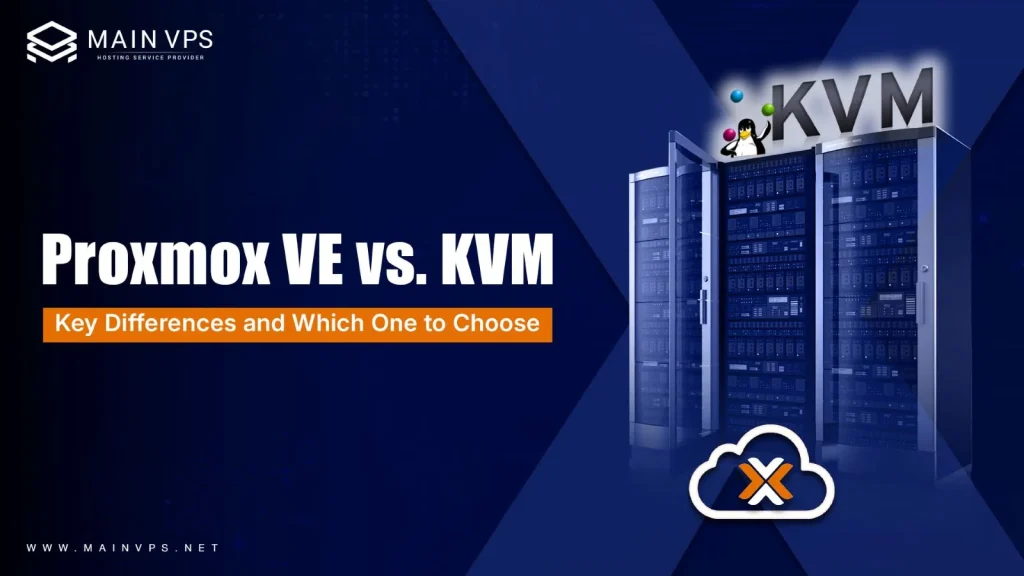
When it comes to virtualization on Linux, two names consistently rise to the top: KVM and Proxmox VE. While often mentioned in the same breath, they serve very different purposes. So, if you’re setting up your first virtual machine or managing a full-scale infrastructure, understanding the distinction between them isn’t just helpful—it’s critical.
Let’s break it down, human-to-human, without fluff, and with just the right amount of technical depth to help you decide which fits your needs better.
What is KVM (Kernel-based Virtual Machine)?
KVM is not a complete platform—it’s a Linux kernel module that turns your Linux machine into a type-1 (bare-metal) hypervisor. It allows you to run multiple isolated virtual environments (VMs), and it’s the engine under the hood for many Linux-based virtualization platforms—including Proxmox itself.
Key Traits of KVM:
- It’s minimal, fast, and built directly into the Linux kernel.
- It’s used by enterprise-grade hypervisors like RHEL, Ubuntu, and even GCP and AWS under the hood.
- You manage it with tools like libvirt, virt-manager, or Virsh CLI.
- It’s not a GUI tool—it’s more like an engine for building one.
So if KVM is the raw power, think of it as the engine block of a high-performance car. But to drive comfortably, most people want more than just an engine.
What is Proxmox VE (Virtual Environment)?
Proxmox VE is an all-in-one virtualization management platform that wraps KVM (and LXC for containers) in a beautiful, powerful web interface. It gives you everything you need to manage VMs, containers, storage, and networking—all from your browser.
Key Traits of Proxmox VE:
- It uses KVM as its core but adds a full UI, management tools, and clustering support.
- Offers a web-based GUI, CLI, and REST API.
- Comes with features like live migration, backups, snapshots, high availability, and software-defined storage built-in.
- Easy to deploy and ready to use in production environments out of the box.
Comparing KVM vs Proxmox VE
Here’s a hands-on comparison table to make things easy:
| Feature | KVM (Raw Hypervisor) | Proxmox VE (Management Platform) |
|---|---|---|
| User Interface | CLI/virt-manager | Web GUI + CLI |
| Ease of Use | Steep learning curve | Beginner-friendly, ready out of the box |
| Virtualization Type | Full virtualization only | Full (KVM) + Containers (LXC) |
| Clustering Support | Manual setup required | Built-in multi-node clustering |
| Backups & Snapshots | Needs external tools | Native GUI support |
| High Availability (HA) | Manual configuration | Turnkey HA with fencing & quorum |
| Container Support | Not included | Native with LXC |
| Enterprise Use | For pros with specific needs | For teams, MSPs, and businesses |
Who Should Use KVM?
KVM is ideal if:
- You’re a Linux pro who loves the terminal.
- You want complete control with no overhead.
- You’re building a custom hypervisor stack.
- You prefer managing things through scripts or automation.
But remember: KVM alone has no GUI, no container support, no snapshots, and no built-in cluster tools. You build those yourself or integrate them manually.
Who Should Use Proxmox VE?
Proxmox is perfect if:
- You want to manage multiple VMs and containers with ease.
- You need clustering, backups, and HA but don’t want to build it all manually.
- You’re an MSP, startup, or sysadmin managing remote infrastructure.
- You appreciate having a clean web interface and automation via API or CLI.
It’s also incredibly popular for homelabs and enterprise use alike. And yes, Proxmox has commercial support if you need it, but the free version is fully functional.
Performance: Is There a Difference?
Not really. Both use KVM as the base. Performance will come down to how well you configure your VMs and your underlying hardware—not the interface itself.
Where Proxmox might slightly lag behind is in extreme edge-case tuning because it abstracts some of the granular control—but for 99% of users, the ease of use far outweighs that.
Security Considerations
Both KVM and Proxmox are enterprise-grade and secure when configured properly.
- KVM relies on the Linux kernel’s security model.
- Proxmox includes role-based access control, firewall, two-factor authentication, and more—all configurable through its interface.
Scalability & Flexibility
Both platforms are scalable, but Proxmox makes it easier:
- Add new nodes to your cluster with a few clicks.
- Migrate VMs between servers without downtime.
- Centralize backup and monitoring—no extra plugins needed.
KVM can do all of this too, but you’ll be piecing it together with open-source tools, which requires more planning, testing, and maintenance.
FAQs: Proxmox vs KVM
1. Is Proxmox better than KVM?
Proxmox actually uses KVM. So, it’s not a “better” replacement—it’s a layer on top. Proxmox makes KVM more accessible, especially for those who want a GUI and full-feature set.
2. Can I use Proxmox in production?
Absolutely. Thousands of companies and data centers use Proxmox daily. It’s stable, open-source, and backed by commercial support options.
3. Do I need a separate KVM install to use Proxmox?
Nope! Proxmox includes everything you need, pre-configured just install it and go.
4. Is there any overhead with Proxmox?
Minimal. Proxmox is optimized and lean. You won’t notice performance issues unless you’re running it on extremely resource-limited hardware.
5. Can I run containers and VMs side-by-side in Proxmox?
Yes! That’s one of its biggest strengths—you can run LXC containers and KVM-based VMs on the same interface, easily.
Final Verdict: KVM or Proxmox?
If you’re building a custom cloud, working in RHEL ecosystems, or automating everything through CLI stick with KVM.
If you want a powerful, all-in-one platform to manage VMs, containers, backups, clusters, and more Proxmox VE is a no-brainer.
They’re not enemies. They’re part of the same ecosystem Proxmox just makes KVM a lot easier to use.
Looking to implement KVM in your infrastructure? Check out our KVM VPS hosting plans for high-performance virtualization with full control and flexibility.





